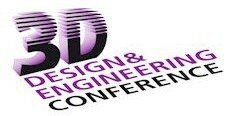With 3-D printing changing the world, one Northwestern University undergraduate spent this past summer in the lab doing his part to use this exciting new technology to create efficient and economic energy.
Nick Geisendorfer won an undergraduate research grant to employ 3-D printing technology to test the possibilities of making a particular kind of fuel cell more efficient and marketable.
He thinks solid oxide fuel cell (SOFC) technology, which produces electricity from the electrochemical oxidation of fuel without burning, could be an answer in the race to reduce carbon emissions.
“Not many people are really researching this or trying to fabricate fuel cells this way,” the McCormick School of Engineering and Applied Science senior said. “This research experience this summer at Northwestern has really helped me figure out my future path.”
He found himself in the right place to push the limits of his research questions.
Geisendorfer’s mentor and academic advisor is Ramille Shah, a renowned scientist and faculty member of both McCormick and the Northwestern University Feinberg School of Medicine. She leads the Tissue Engineering and Additive Manufacturing Lab, where she uses 3-D printing to create new biodegradable materials and scaffolding for use in regenerative medicine, as well as unique functional 3-D inks to be used for energy and advanced structural applications.
“It’s more of an art than people realize,” Shah said. “You can’t just press go and expect the printer to create exactly what you want. Nick has put in a lot of time and really perfected the printing process.”
Previously named one of Crain’s Chicago Business’ “40 under 40,” Shah has watched Geisendorfer become one of the most skilled printers in her lab.
Geisendorfer is also collaborating with McCormick professor Scott Barnett, whose lab at Northwestern focuses on improving fuel cell performance. For his work over the summer, Geisendorfer was recently awarded the Fletcher Undergraduate Research Grant Prize as one of the best undergraduate research projects of the year.
Guided by the expertise of Shah and Barnett, Geisendorfer’s interdisciplinary project has not only helped him discover new techniques for fabricating SOFCs but also determine his plans for the future.
This is another in a series of stories profiling Northwestern undergraduates who received 2015 summer Undergraduate Research Grants. Read more in a Q&A with Geisendorfer, who recently spoke to Northwestern News about his research and reflected on his time at Northwestern.Read more
Source: Northwestern University


